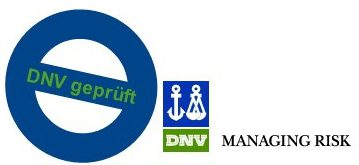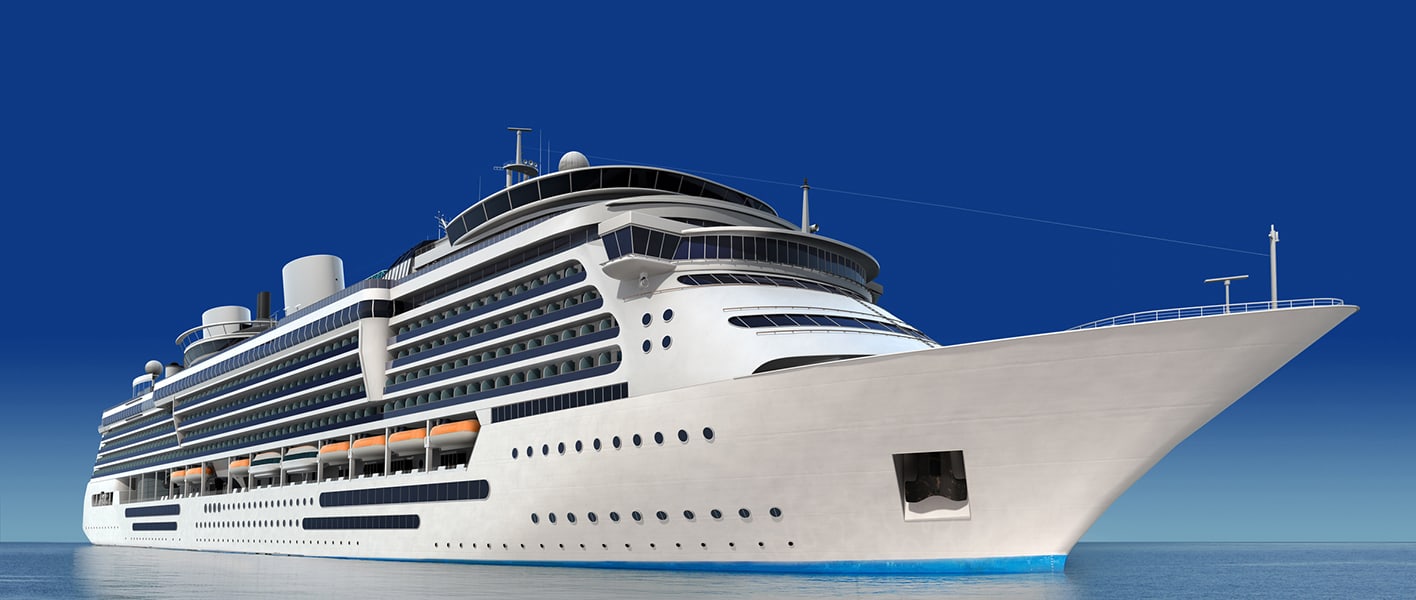Sustainable, alternative disinfection of potable and swimming pool water on board

To supply passengers and crew members with fresh, hygienically clean water is challenging on ships. Shipboard potable water (drinking, bathing, whirlpools, etc.) is either purchased onshore or generated on board from seawater via reverse osmosis systems or evaporators. Additional requirements must be followed to maintain hygienic standards.
Among various other requirements, the water on board is treated according to USPH standards (United States Public Health Service). USPH inspects most vessels twice a year to ensure compliance with these standards as well as other USPH requirements.
Using the aquagroup generators, you not only meet the requirements of the USPH, but also generate your own disinfectant (sodium hypochlorite based on electrolysis with 5,000 ppm in concentrate) on board. Only water, electricity and salt are required for production. Harmless resources that are available worldwide.
Sodium Hypochlorite (NaOCl) is used to prevent or stop the growth of microbiological activity in water. Active chlorine disinfects by the chlorination oxidation reaction of RNA/DNA and destroys the Extra cellular Polymeric Sustenance’s (EPS) of a biofilm. This EPS layer protects the micro-organisms present in the biofilm and facilitates the transport of nutrients.
Factors contributing to waterborne outbreaks include contaminated bunkered water, cross connections between potable and non-potable water, improper loading procedures, poor design and construction of potable water storage tanks and inadequate disinfection. The presence of biofilms within a system plays a significant role in harbouring and providing favourable conditions in which the legionella bacteria may grow. Microorganisms including bacteria living in a biofilm are often more resistant to traditional sanitizing procedures, posing a serious health risk and possible contaminant.
A ship is responsible for the quality and safety of the supplied drinking water and the pool water and the maintenance of such that bacteria does not negatively impact the quality of the drinking water/ pool water provided thereby possessing any health risk to consumers. However the (bacteriological) quality of drinking and process/pool water often changes during buffering and transport.
The objective of the ECA process water treatment is to avoid the multiplication of micro-organisms and to prevent the agglomeration of micro-organisms into a biofilm.
WHO recommends
Sodium Hypochlorite is used in many applications throughout the world as biocide for drinking and process water sanitizing and disinfection. Its applications are prescribed by the World Health Organization and authorized in different international and national legislation, including Europe’s Biocide Product Directive.

In situ versus canned goods
The most common method for the generation of active chlorine in process water is the dosing of bleach or bleach related products. This involves the transport and handling of dangerous chemicals trough urban areas and of buffering the chemicals on ships for longer time periods. The storage of these chemicals often leads to the building of chlorates which can reduce the efficacy of the chemicals and also provide risks for the consumer. In spite of intensive training and safety measurements the transport and handling of bleach related products regularly leads to human accidents.
The ECA water generator offers the advantage of producing active chlorine out of a harmless Sodium Chloride salt solution which is easy to handle and worldwide available. This process substantially reduces the risks involved in the distribution, transport, storage and handling of the dangerous active chlorine treatment of the process water on ships.
In addition to the very good microbiological efficacy, the advantages are biofilm reduction as well as the fact that NADES 2.0 is not a hazardous substance – as opposed to conventional sodium hypochlorite. In addition, transport, storage and disposal of canisters are avoided by means of in-situ, i.e. on site, production.
We therefore offer employee safety combined with microbiological safety plus sustainability.
Process Description: NADES 2.0 on board
The installation of ECA devices to produce NaOCl on site and on demand. ECA devices will installed with enough production and buffering capacity to enable the manufacture of sufficient NaOCl to cover the sanitation of the potable water system, every pool and whirlpool on board. Transfer of the medium will be undertaken fully automatic via transfer system.

USPH & DNV
Our generators are already in use on numerous cruise ships with various applications in the area of drinking water and pool water disinfection. Of course, our devices are DNV approved!
Vessel Sanitation Program (VSP)
The Vessel Sanitation Program (VSP) at the Centers for Disease Control and Prevention (CDC) assists the cruise ship industry to prevent and control the introduction, transmission, and spread of gastrointestinal (GI) illnesses on cruise ships.
VSP operates under the authority of the Public Health Service Act.
The VSP Construction Guidelines cover components of the vessel’s facilities related to public health, including food storage, preparation, and service, and water bunkering, storage, disinfection, and distribution.
Vessel owners and operators may select the design and equipment that best meets their needs. However, the design and equipment must also meet the sanitary design criteria of the American National Standards Institute (ANSI) or equivalent organization as well as VSP’s routine operational inspection requirements.
Generate your own disinfectant on site!
We will be happy to make you an individual offer!

